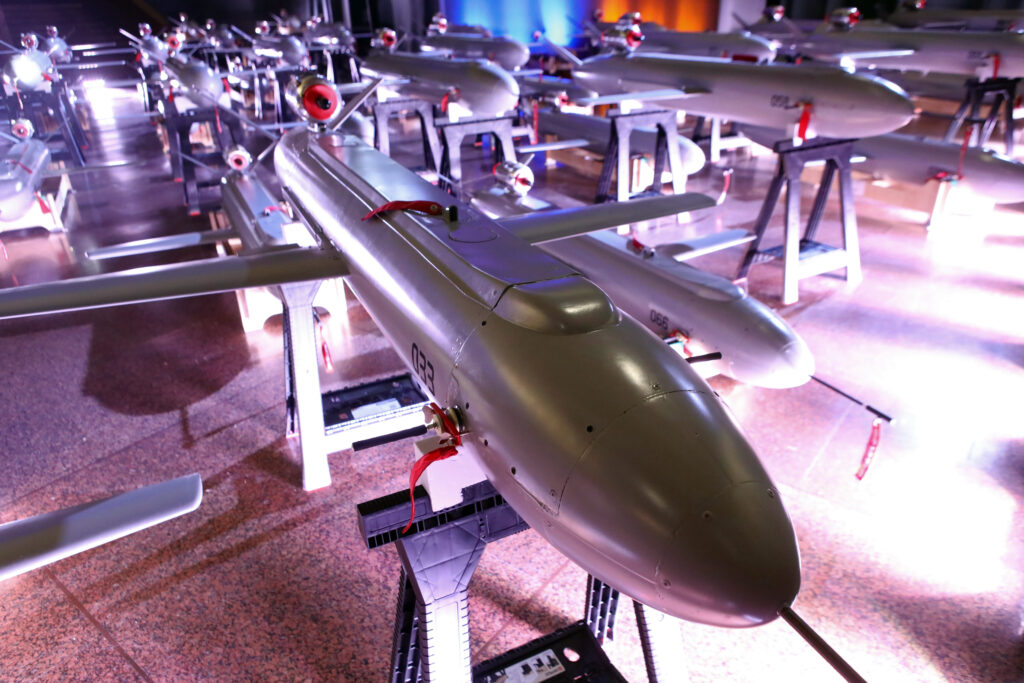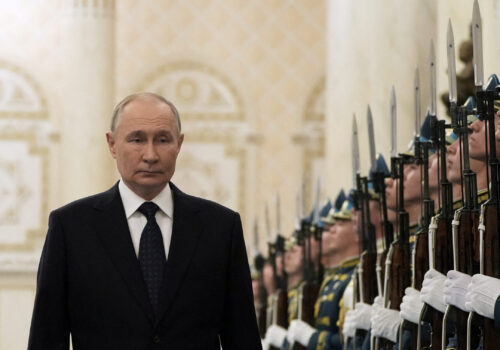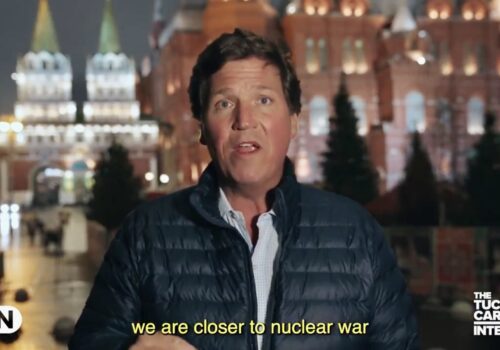Ukraine unveiled a new domestically-produced missile drone in early December which should significantly enhance the country’s ability to conduct airstrikes against targets deep inside Russia. Dubbed the “Peklo” (“Hell” in Ukrainian), this new addition to the Ukrainian arsenal has a reported range of 700 kilometers and can reach speeds of up to 700 kilometers per hour.
In a social media post showcasing the weapon, Ukrainian President Volodymyr Zelenskyy said the first batch of Peklo missile drones had already been delivered to the Ukrainian military and had proved its combat effectiveness. “The mission now is to scale up production and deployment,” he commented.
The Peklo is one of a number of long-range weapons currently being developed by Ukraine as the country seeks to boost its ability to strike targets inside Russia. Speaking in Kyiv on December 10, Zelenskyy announced that serial production of the long-range Palyanytsia missile drone was now underway, with trials of the new Ruta missile ongoing.
Meanwhile, a long-range version of Ukraine’s domestically produced Neptune cruise missile is expected to become operational in the near future. The Neptune is currently best known as the weapon used to sink the flagship of Russia’s Black Sea Fleet, the Moskva, during the initial months of the Russian invasion in spring 2022.
In addition to these developments, the Ukrainian Defense Ministry recently announced plans to deliver more than 30,000 long-range attack drones in 2025, with production partially financed by international partners. Since the beginning of 2024, Ukraine has conducted an extensive air offensive against Russia’s energy industry and military infrastructure using long-range drones. With domestic output now reaching record levels, the coming year is likely to witness a sharp escalation in Ukrainian attacks.
Stay updated
As the world watches the Russian invasion of Ukraine unfold, UkraineAlert delivers the best Atlantic Council expert insight and analysis on Ukraine twice a week directly to your inbox.
Ukraine’s efforts to expand the domestic production of long-range weapons reflect widespread frustration in Kyiv over restrictions imposed by the country’s Western partners on attacks inside Russia. For almost the entire war, Western leaders have prevented Ukraine from striking back against Russian targets due to concerns over possible retaliatory measures from the Kremlin. This has allowed Russia to launch attacks against Ukrainian cities and civilian infrastructure with impunity, while forcing Ukraine to effectively defend itself with one arm tied behind its back.
The United States and other partners recently relaxed these restrictions and authorized some categories of Ukrainian strikes inside Russia using Western weapons. However, a number of constraints are believed to remain in place. The missiles provided to Ukraine by the country’s Western allies also have a relatively modest maximum range of up to 300 kilometers, making them of limited use against a country as vast as Russia.
Eurasia Center events

Many in Kyiv believe an expanded long-range arsenal is essential in order to secure a viable peace with Russia. Advocates of increased long-range strikes argue that unless Ukraine is able to bring Putin’s invasion home to Russia, the Kremlin dictator will have little reason to seek a settlement. They believe that missile attacks can weaken Russia’s military potential while also starving Putin’s war machine of funding by targeting oil refineries and other elements of the country’s economically crucial but highly vulnerable energy industry.
Zelenskyy has repeatedly stressed the importance of being able to strike targets deep inside Russia, and has frequently pressed Ukraine’s allies to supply more long-range weapons. His recently presented victory plan reportedly contained one confidential segment proposing the delivery of US-made Tomahawk missiles with a range of almost 2,500 kilometers as part of a “non-nuclear deterrence package.” While this request was widely dismissed as unrealistic, it underlined the importance attached to long-range strike capabilities among officials in Kyiv as Ukrainian policymakers search for the tools to secure a lasting peace.
Recent increases in the production of long-range drones and missiles come as Ukraine seeks to revive the country’s long-neglected defense industry and reduce reliance on military aid. Since the onset of Russia’s full-scale invasion almost three years ago, Ukraine has managed to dramatically increase domestic output in areas ranging from armored vehicles and artillery shells to electronic warfare equipment and naval drones. Much of this is being financed by Ukraine’s partners, who are being encouraged to place orders with Ukrainian producers.
As talk turns to the possibility of a peace deal once Donald Trump returns to the White House in January 2025, Ukrainians are taking nothing for granted and are preparing for a fourth year of Europe’s largest war since World War II. They hope that by enhancing their ability to strike back inside Russia, they will be able to increase the pressure on Vladimir Putin and strengthen their own position ahead of any negotiations.
Peter Dickinson is editor of the Atlantic Council’s UkraineAlert service.
Further reading
The views expressed in UkraineAlert are solely those of the authors and do not necessarily reflect the views of the Atlantic Council, its staff, or its supporters.

The Eurasia Center’s mission is to enhance transatlantic cooperation in promoting stability, democratic values and prosperity in Eurasia, from Eastern Europe and Turkey in the West to the Caucasus, Russia and Central Asia in the East.
Follow us on social media
and support our work
Image: (Photo by Ukrinform/NurPhoto)




